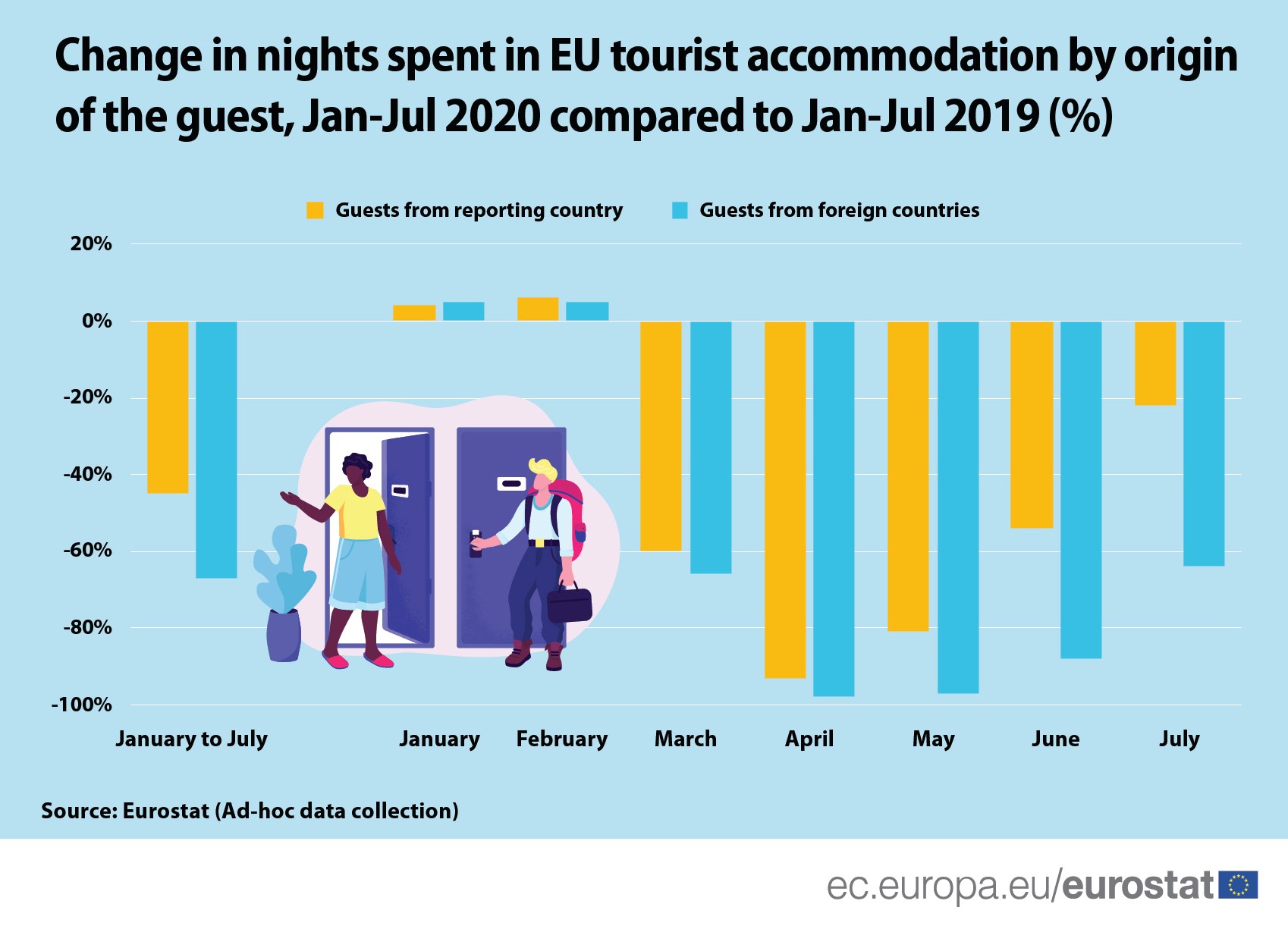At EU level, the share of gross final energy consumption from renewable sources reached 19.7% in 2019.
Statistics
In the third quarter of 2020, the job vacancy rate was 1.7% in both the euro area and the EU, up from 1.6% in the previous quarter and down from 2.2% in the third quarter of 2019.
To prevent the spread of the COVID-19 pandemic, countries around the world have taken a variety of restrictive measures since the beginning of 2020. The air transport industry was immediately affec
In these times of COVID-19, it is interesting to know how much is being spent on healthcare.
In 2020, the tourism industry has suffered from the COVID-19 outbreak.
The “Health at a Glance: Europe 2020” Report provides a first look at comparative data on how European countries have experienced and responded to the pandemic, including both outcomes and policies
In the second quarter of 2020, the EU employment rate (for people aged 20-64) was 66% for women and 77% for men.
During the early part of 2020 the tourism industry suffered as a result of travel restrictions implemented in response to the Covid-19 pandemic.
In 2019 more than half (61.3%) of employed people in the EU travelled less than 30 minutes from home to work, i.e. commuted one-way and without any detours.
In 2018 there were 4.25 million live births across the EU.









